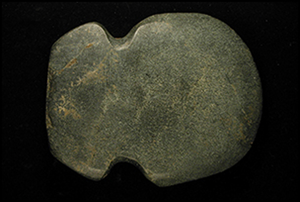Article contents
Social complexity and core-periphery relationships in an Andean Formative ceremonial centre: domestic occupation at Chavín de Huántar
Published online by Cambridge University Press: 16 June 2022
Abstract

The site of Chavín de Huántar, Peru, lies at the heart of developing social complexity in the Andean Formative period. The archaeological contexts on the site's immediate periphery are assessed to investigate the nature of occupation, activities practised, and relationships between the area's inhabitants and Chavín's ceremonial centre. The peripheral Wacheqsa sector, which began as a modest, domestic occupation in the second millennium BC, was reconfigured c. 800 cal BC into a more substantial settlement, perhaps inhabited by craftspeople producing artefacts for the Chavín authorities. The implications of this study are relevant to wider questions regarding relationships between monumental ceremonial centres and their immediate peripheries, and the study of early socio-economic complexity.
- Type
- Research Article
- Information
- Copyright
- Copyright © The Author(s), 2022. Published by Cambridge University Press on behalf of Antiquity Publications Ltd.
References
- 3
- Cited by


